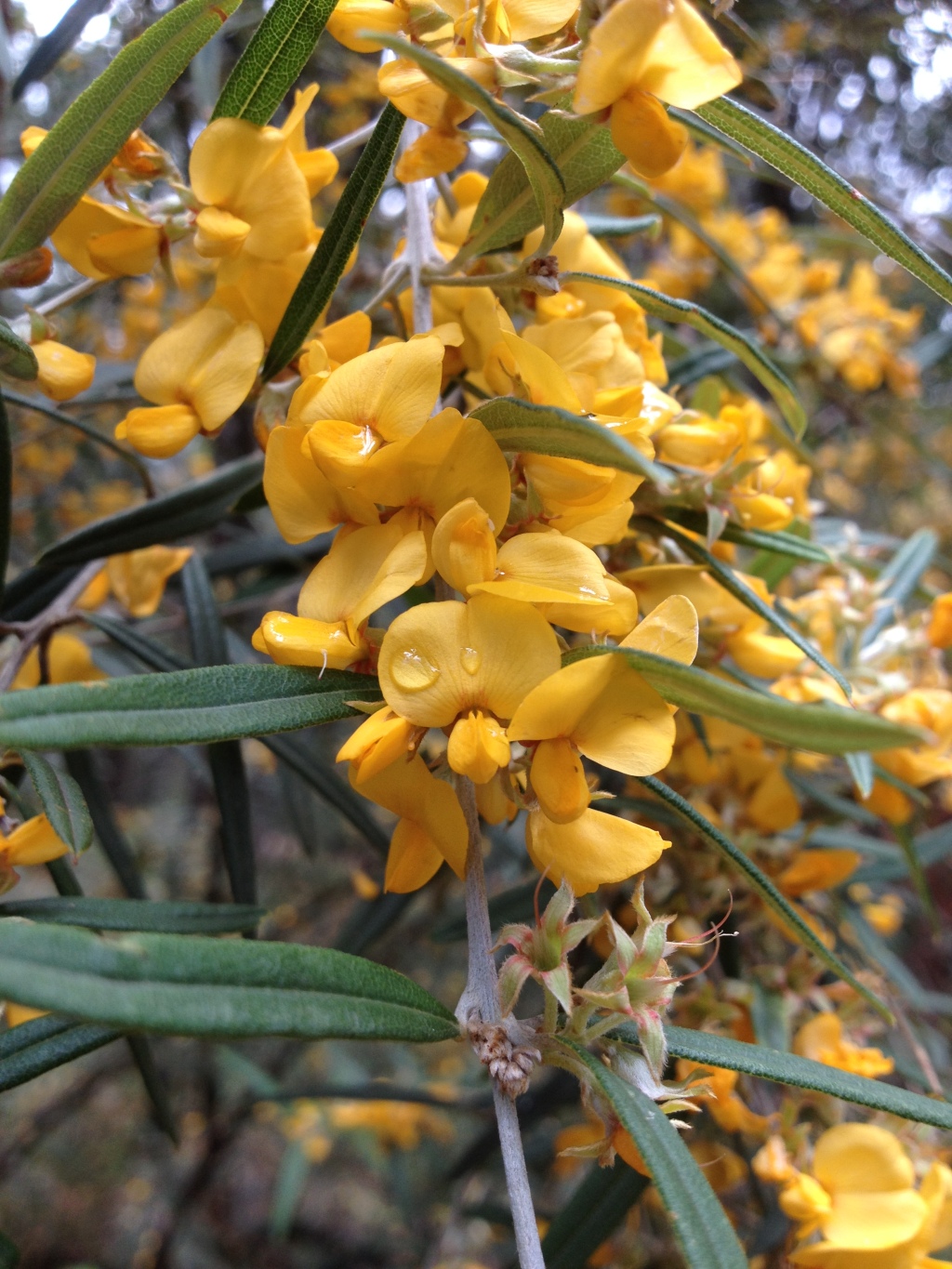Oxylobium
Perennial prostrate to medium shrubs; stems mostly pubescent, hairs simple. Leaves alternate, opposite or whorled, simple, entire, upper surface often tuberculate, margins recurved, shortly petiolate; stipules small and flexible or absent. Inflorescence an axillary or terminal raceme, cluster or corymb; flowers pedunculate; bracts simple, often caducous; bracteoles often caducous. Calyx 5-toothed, teeth mostly erect, more or less equal, upper 2 wider and fused higher up; petals clawed, yellow, orange or reddish; standard suborbicular to reniform, emarginate, longer than wings and keel; wings oblong or obovate; keel straight or slightly curved, broad and obtuse; stamens free, anthers uniform; ovary sessile or stipitate, style filiform or thickened near base, stigma small, terminal, ovules 2 or more. Pod ovoid or obloid, turgid, lacking septa or subseptate between seeds, pubescent or villous, valves leathery; seeds 2–several, brown, reniform and exarillate (in Victoria).
About 30 species, all endemic to Australia and found in all States except South Australia.
Jeanes, J.A. (1996). Fabaceae. In: Walsh, N.G.; Entwisle, T.J., Flora of Victoria Vol. 3, Dicotyledons Winteraceae to Myrtaceae, pp. 663–829. Inkata Press, Melbourne.
 Spinning
Spinning